Peel-and-Eat Boiled Shrimp with Cocktail Sauce
- By Jennifer Segal
- Updated August 14, 2025
- 111 Comments
- Leave a Review

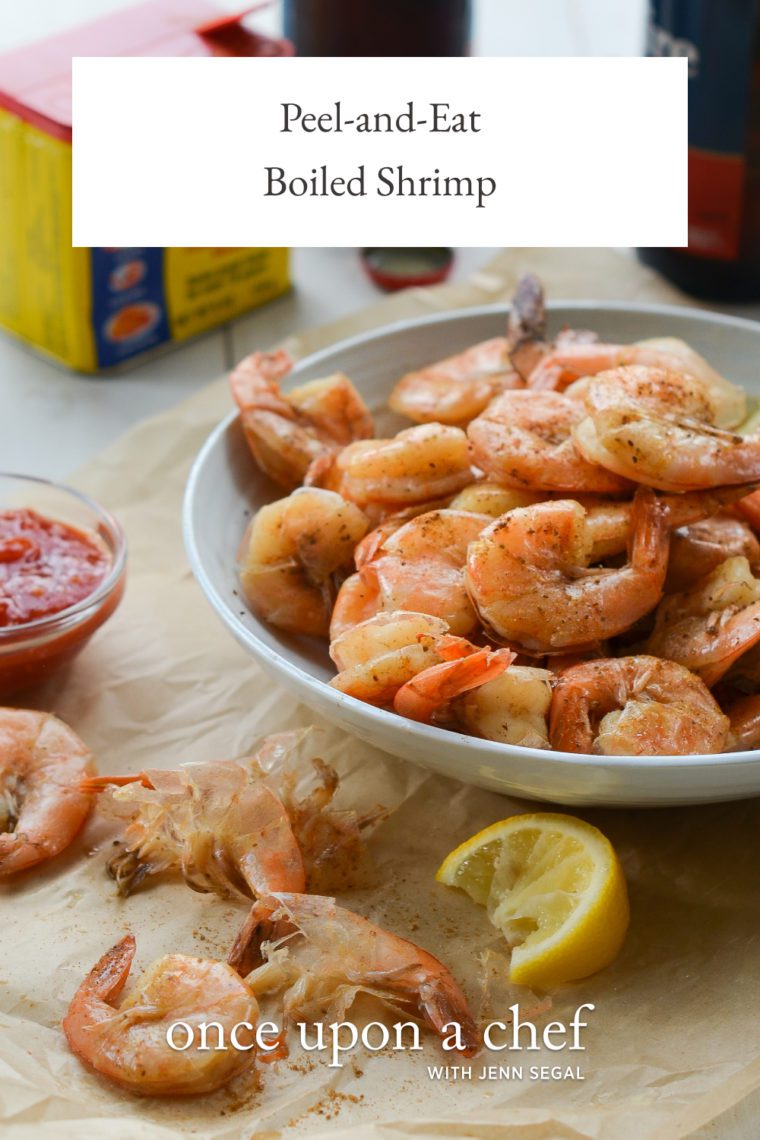
This post may contain affiliate links. Read my full disclosure policy.
Ready to dig in? These Maryland-style boiled shrimp are packed with flavor—peel, eat, and enjoy a hands-on seafood feast!
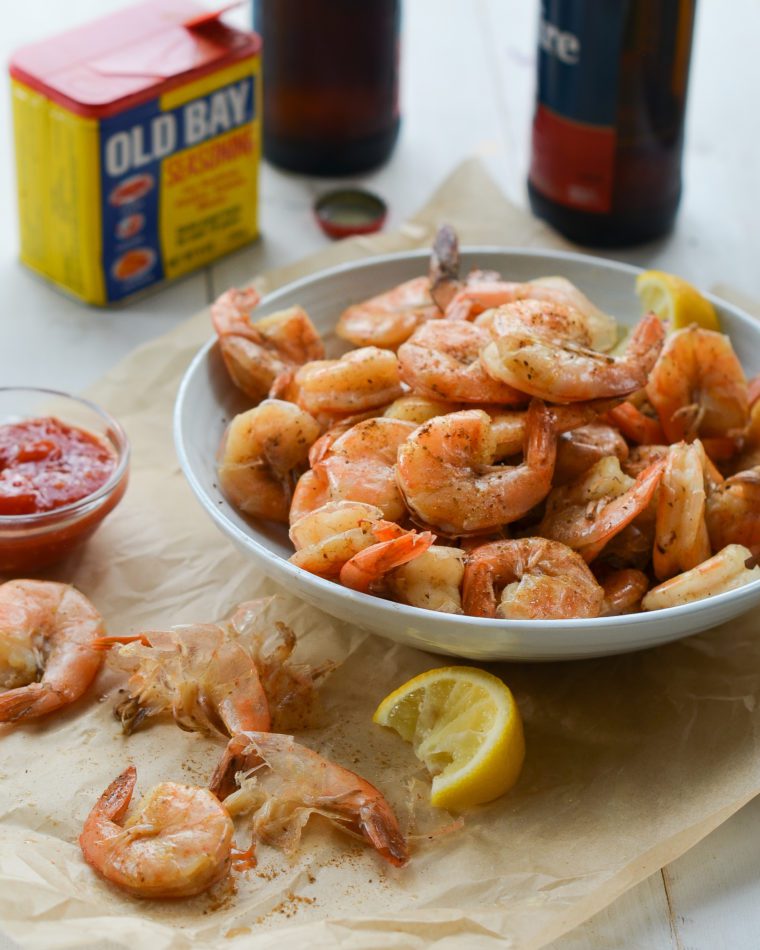
One of my family’s favorite summer traditions is heading to seafood shacks, where we sit around brown paper–covered picnic tables and dig into peel-and-eat shrimp, blue crabs, and crab cakes. Even better is recreating the experience at home with a backyard seafood boil. Boiled shrimp are quick, easy, and so much fun to eat. I love making them Maryland-style—simmered in beer and Old Bay, with homemade cocktail sauce on the side. Cooking shrimp in the shell locks in flavor and moisture, and it means less work for the cook!
Boiled shrimp pairs nicely with cornbread, fresh corn salad, or any number of summery corn dishes.
“This is the best Maryland-style spiced shrimp I have ever had, and I’m from MD!”
What You’ll Need To Make Peel-And-Eat Boiled Shrimp With Cocktail Sauce
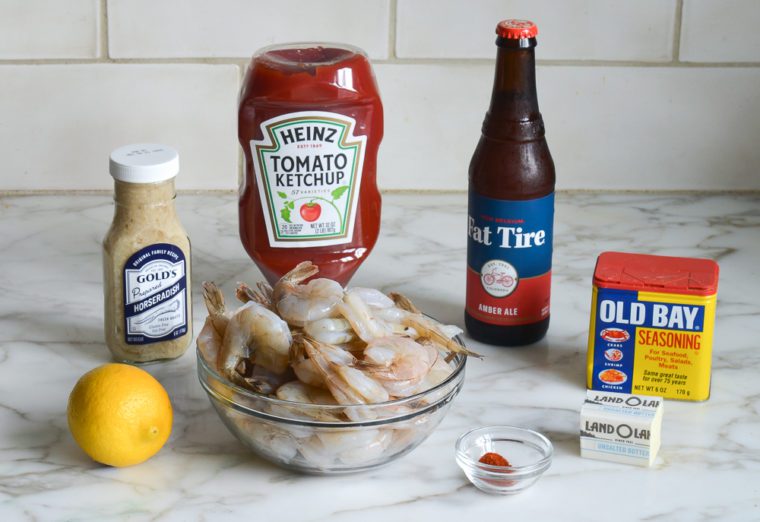
- OLD BAY: Adds a signature blend of bold, zesty spices that perfectly complements the shrimp. The primary spices in Old Bay are celery salt, red and black pepper, and paprika.
- BUTTER, BEER & WATER: These work together to create the flavorful cooking liquid for the shrimp. Butter adds richness, beer lends a subtle malty note, and a bit of water dilutes the beer flavor slightly so it doesn’t overpower the shrimp.
- EXTRA-LARGE SHRIMP: Meaty enough to hold up to boiling. I like frozen, deveined shrimp — they’re usually cleaned and flash-frozen right after being caught. Unless you live near the coast, “fresh” shrimp at the fish counter is often previously frozen anyway, so you’re better off buying frozen and thawing at home.
- KETCHUP, PREPARED HORSERADISH, LEMON JUICE & CAYENNE: The building blocks of a great cocktail sauce. Ketchup gives you a sweet-tangy base, horseradish adds that signature spicy kick, lemon juice brightens everything, and a pinch of cayenne brings just enough heat to keep things interesting.
- Jump to the printable recipe for precise measurements
Step-By-Step Instructions
Step 1: Heat the cooking liquid. Combine the beer, water, butter, and Old Bay in a large pot or Dutch oven and bring to a boil.
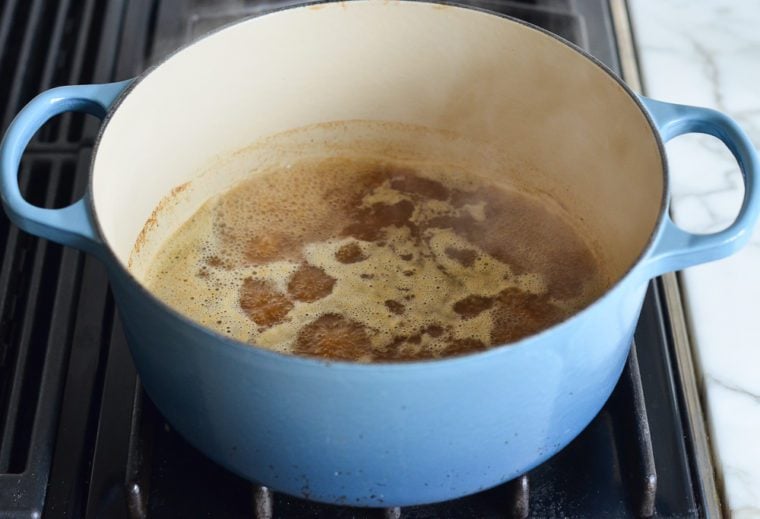
Step 2: Boil the shrimp. Add the shrimp, turn the heat down to medium, and cover with a lid. Cook for 3 to 6 minutes, stirring once so they cook evenly, until the shrimp are pink but still tender. Be careful not to overcook!
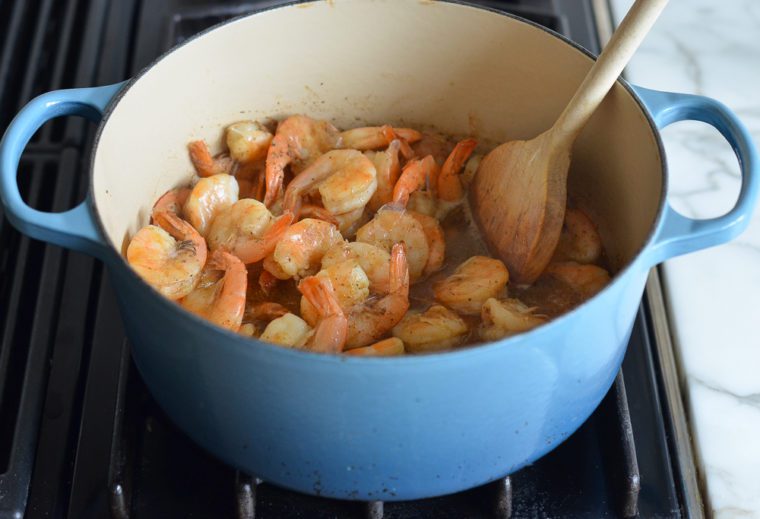
Step 3: Make the sauce. Combine the ketchup, horseradish, lemon juice, and cayenne pepper in a small bowl and stir to combine.
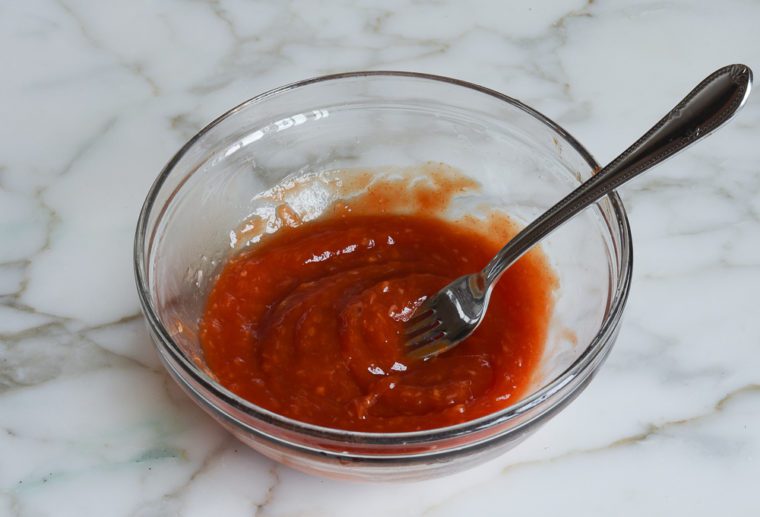
Step 4: Serve. Use a slotted spoon to transfer the shrimp to a platter. Serve hot or cold with beer, cocktail sauce, and plenty of napkins. Enjoy!

You May Also Like
Peel-and-Eat Boiled Shrimp with Cocktail Sauce

These boiled shrimp are messy, delicious, and made for the best kind of summer eating.
Ingredients
For the Shrimp
- 2½ tablespoons Old Bay seasoning
- 3 tablespoons unsalted butter
- 1 cup beer
- 1 cup water
- 2 pounds extra large shrimp (26-30 per pound), shell split and deveined, thawed if frozen
For the Cocktail Sauce
- 6 tablespoons ketchup
- ½ tablespoon prepared horseradish (see note)
- 1 tablespoon freshly squeezed lemon juice
- Pinch cayenne pepper
Instructions
For the Shrimp
- Combine the Old Bay, butter, beer, and water in a large pot and bring to a boil. Add the shrimp, turn the heat down to medium, and cover the pot with a lid. Cook, stirring once, for 3 to 6 minutes, or until the shrimp are pink and just cooked through. Using a slotted spoon, remove the shrimp from the broth and transfer to a serving platter. Serve hot or cold with cocktail sauce.
For the Cocktail Sauce
- In a small bowl, whisk together the ketchup, horseradish, lemon juice, and cayenne pepper. Taste and adjust seasoning, if necessary.
- Note: Prepared horseradish can be found in the refrigerator aisle at your supermarket.
Pair with
Nutrition Information
Powered by ![]()
- Per serving (6 servings)
- Calories: 220
- Fat: 7 g
- Saturated fat: 4 g
- Carbohydrates: 8 g
- Sugar: 4 g
- Fiber: 0 g
- Protein: 31 g
- Sodium: 344 mg
- Cholesterol: 259 mg
This website is written and produced for informational purposes only. I am not a certified nutritionist and the nutritional data on this site has not been evaluated or approved by a nutritionist or the Food and Drug Administration. Nutritional information is offered as a courtesy and should not be construed as a guarantee. The data is calculated through an online nutritional calculator, Edamam.com. Although I do my best to provide accurate nutritional information, these figures should be considered estimates only. Varying factors such as product types or brands purchased, natural fluctuations in fresh produce, and the way ingredients are processed change the effective nutritional information in any given recipe. Furthermore, different online calculators provide different results depending on their own nutrition fact sources and algorithms. To obtain the most accurate nutritional information in a given recipe, you should calculate the nutritional information with the actual ingredients used in your recipe, using your preferred nutrition calculator.
See more recipes:
Comments
Add a Comment Cancel reply
This site uses Akismet to reduce spam. Learn how your comment data is processed.
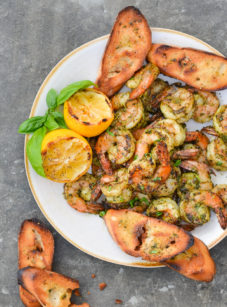
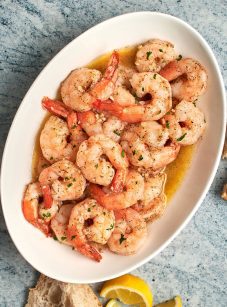
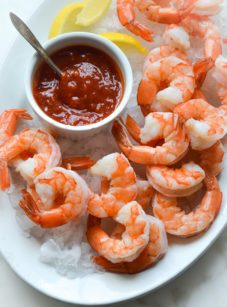
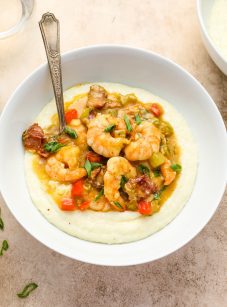
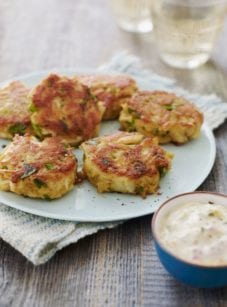

This is the BEST shrimp cocktail ever. It actually tastes like something and the cocktail sauce is the perfect compliment to the shrimp. I make it for every party, and it is always requested around the Holidays, and it’s so simple!
Hello to my favorite chef! I don’t eat shrimp, but want to prepare for friends. I usually order and have steamed. Is the simmer time 3 or 6. That is such a variation if we use the recommended size. How to judge the time a bit closer than double?
Thank you.
Hi Sue, I give that window because there’s some variation in terms of people’s stoves, so it’s hard to say whether your shrimp will be done closer to the three or the six-minute mark. Rather than relying solely on time, watch for visual and textural cues: shrimp are done when they’re no longer translucent and curled into a loose “C” shape. Feel free to cut into one to make sure they’re opaque before pulling off the heat.
The effort to deliciousness ratio is off the charts for this one, especially if you get pre-prepared shrimp. Not a fan of cocktail sauce, so didn’t try that (I’m sure it’s good.). For dairy-free, I used plant butter and it was still wonderful! Will definitely put this on the rotation.
This recipe looks great, but I can’t figure out where all the sodium is coming from. The nutrition info shows it’s over 1,000 mg/serving. I have done the math and can’t figure out how they arrived at so high a number. Maybe someone can enlighten me.
Hi Barbara, I just plugged the numbers back into the software I use to calculate nutritional information and the original sodiumm count must’ve been a typo because the sodium per serving comes out to be 344 mg — quite a difference! I’m going to update the recipe now. Hope you enjoy if you make it!
This was an easy shrimp boil and it tasted so GOOD. Definitely will make again and recommend!
Hey Jennifer, your favorite retired US Navy guy here. Made this two nights ago. My “peel and eat” boil is way different with more “stuff” that I let sit in the pot at a high simmer for a good portion of the day. Makes the house smell good. So no comment on yours good or bad. Anyway, the sauce was really good as I always make my own. We weren’t sure that we would like the amount of horseradish, but it was perfect. I did put more cayenne in but that’s just us. Keep it up, you are my go-to for ideas.
Jon
US Navy Retired
This has been on my list for a while, and I finally made it – it was so good!! Super easy to make. I will definitely be making my shrimp this was again! I feel like I could have eaten the whole batch, but I did share!!
So I read the reviews. Thought it sounded great. I don’t know what I did wrong.
Shrimp seemed fresh from Central Market when I was unpacking them. And I’m very picky. So if know when shrimp aren’t fresh. But I did exactly as recipe called for I promise and shrimp were mushy at the head which was strange.
I cooked 6 minutes.
Not sure what I did wrong. Any thoughts?
The only thing that could’ve potentially gone wrong with you cooking for the maximum amount of time is that they’d get overcooked, but that would have made them tough – not mushy – so the only thing that I think could cause the issue would (sadly) be the shrimp.